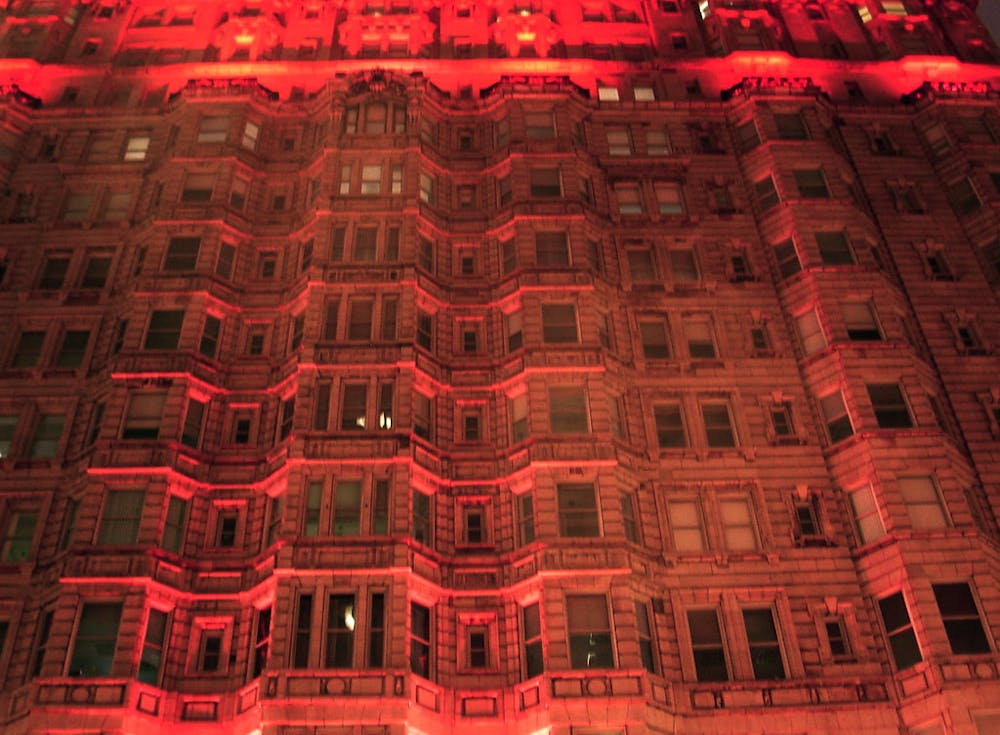On Wednesday afternoon, residents of on-campus housing facility Homewood Apartments received an email from Hopkins concerning the detection of elevated levels of Legionella bacteria in the facility’s water supply.
By Friday afternoon, students reported that Hopkins Facilities entered their apartments to install hospital-grade showerheads to prevent the situation from impacting student health.
This announcement comes after an August 13 email documenting elevated levels of Legionella in AMRs I, II and III. According to the University, these residences received thorough treatment. Facilities installed hospital-grade showerheads in these buildings as well.
According to the Centers for Disease Control (CDC), there is no known safe level of Legionella. The causative agent of both Legionnaires’ disease and Pontiac fever, Legionella is commonly found in environmental water sources but can often accumulate to unsafe levels in unused buildings. In response to dormitories and office buildings sitting vacant due to COVID-19-related shutdowns, the CDC has issued guidance on how to minimize Legionella risk prior to reopening.
While Hopkins was unable to provide a written statement to The News-Letter, they directed questions to a Legionella update page on the University website. According to the website, Hopkins has been following public health guidelines for the duration of the situation.
“Out of an abundance of caution, we have intervened and taken remediation steps at even lower levels than advised by public health officials,” the page said.
Most people who are exposed to Legionella do not contract Legionnaires’ disease. The ailment is most common in the elderly or immunocompromised. It is most commonly spread when water is aerosolized through showerheads, cooling towers or fountains. Hopkins asserted in an email to students that the water was safe to drink, as Legionella is not transmitted via ingestion. However, the CDC does acknowledge less common instances of individuals getting sick through the aspiration of drinking water or possibly from other individuals.
Symptoms of Legionnaires’ disease are similar to that of pneumonia and include fever, muscle aches, coughing and headaches. Pontiac fever is often a more mild form of Legionella infection that can cause fever and muscle aches.
Hopkins has not yet reported any cases of Legionnaires’ disease or Pontiac fever among students or staff. As of August 13, staff members working in affected facilities were offered options for testing, but none reported any symptoms. In addition, cases of Legionella infection must be reported to the State of Maryland for follow-up.
In response to a perceived lack of explanation from the University email, sophomore and Homewood Apartments resident Dinaka Onoh reported initially being unnerved by the communication in an interview with The News-Letter.
“I had no idea what this bacteria was, so I was like, ‘Is it Salmonella? Is it E. coli? Is it dangerous?’” Onoh said.
Sophomore and Homewood Apartments resident Allison Lorentz also reported spending time searching Google for information on the bacteria.
“It seemed a lot worse than Hopkins made it out to be, so I don’t know if they were trying to keep us from panicking,” Lorentz said. “I appreciate that they got on it quickly.”
The Hopkins information page acknowledges concerns that students living in the AMRs or Homewood Apartments during the spring semesters may have been exposed to Legionella but suggests that elevated levels of the bacteria were not detected during this time. In the case of the AMRs, accumulation occurred when buildings were mostly vacated for summer.
According to the Hopkins information page, the University expects that normal levels of water use that accompany the campus reopening this fall will decrease the likelihood that Legionella will accumulate in building systems. In the meantime, Hopkins plans to continue monitoring campus facilities throughout the semester to detect any abnormalities.





